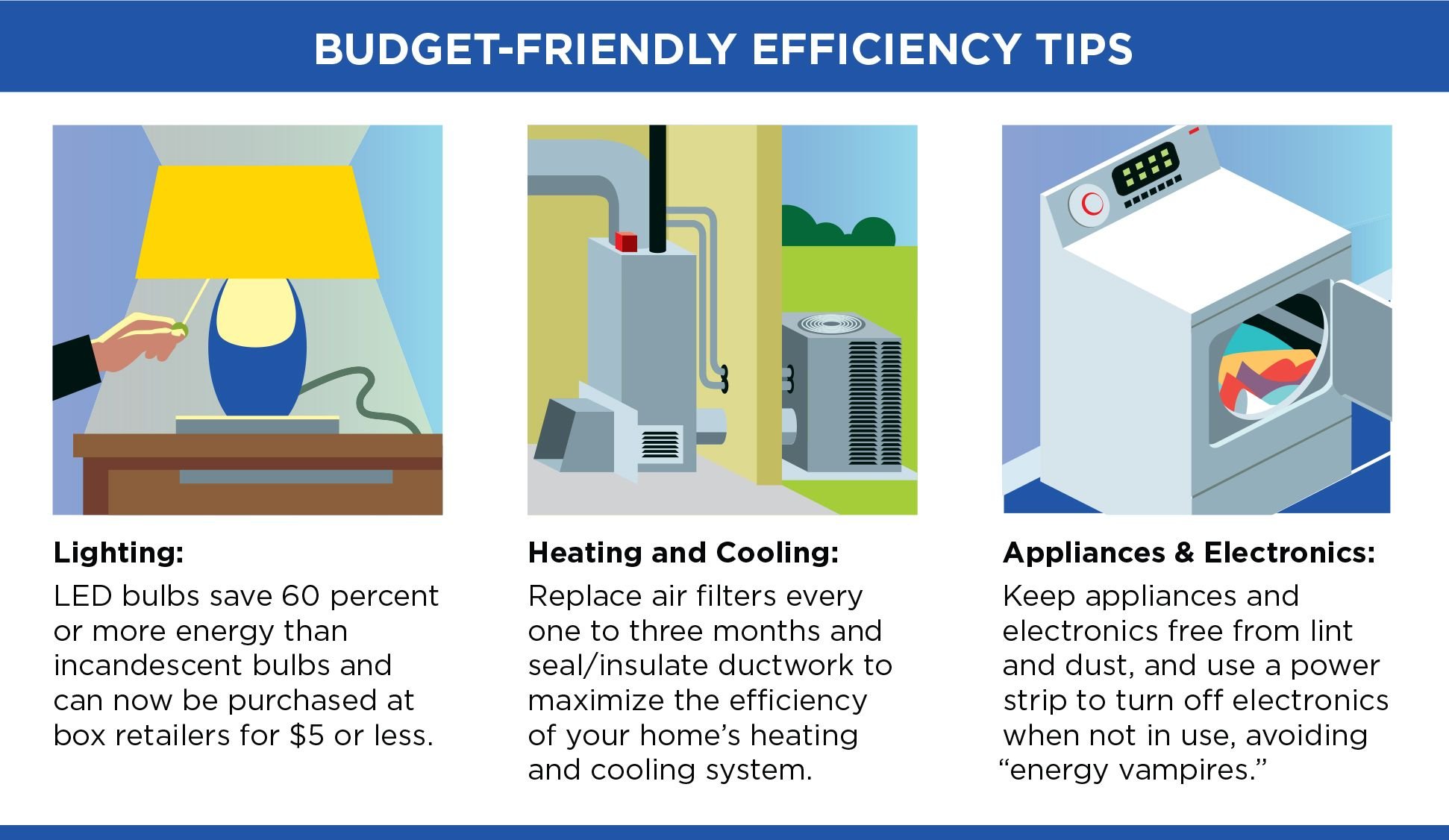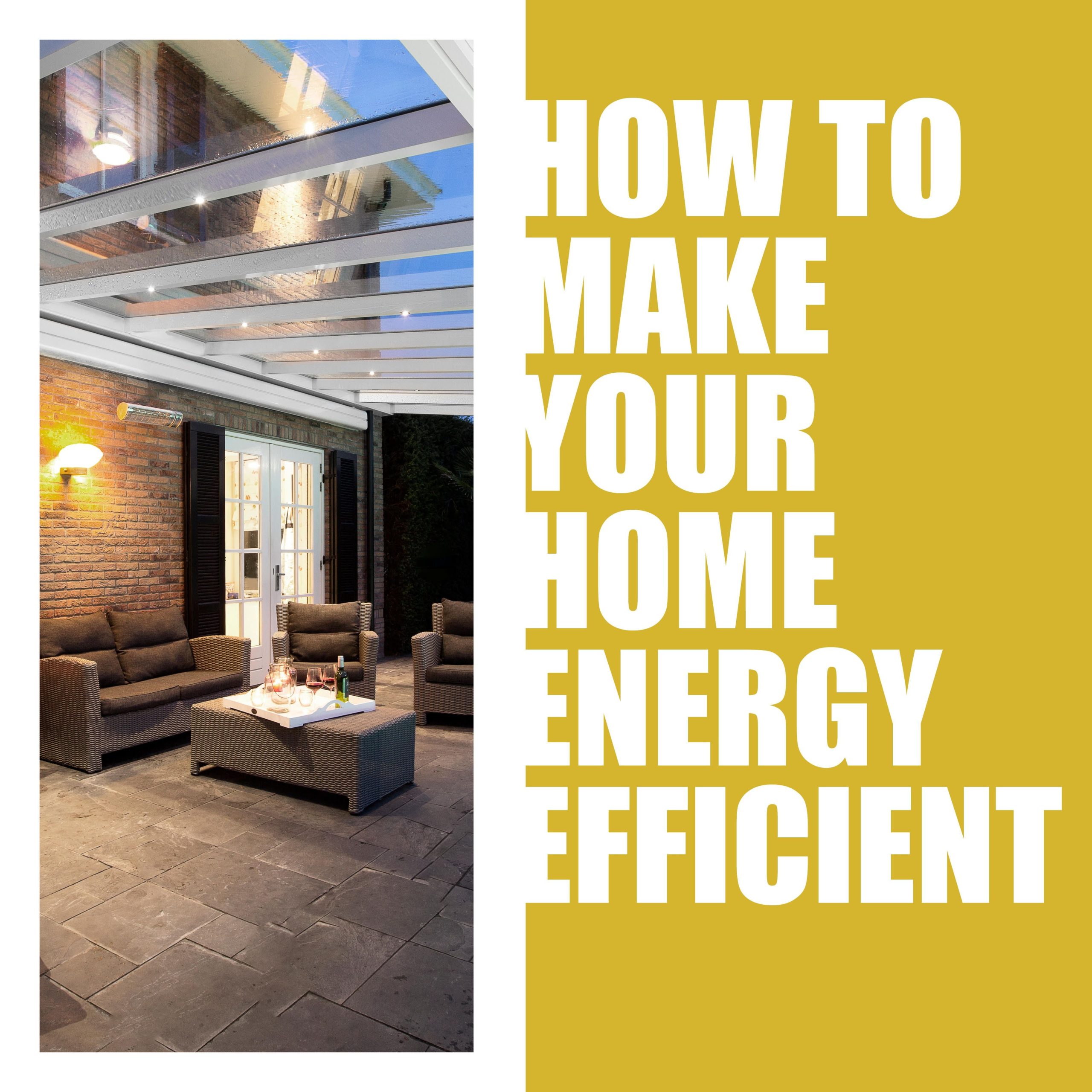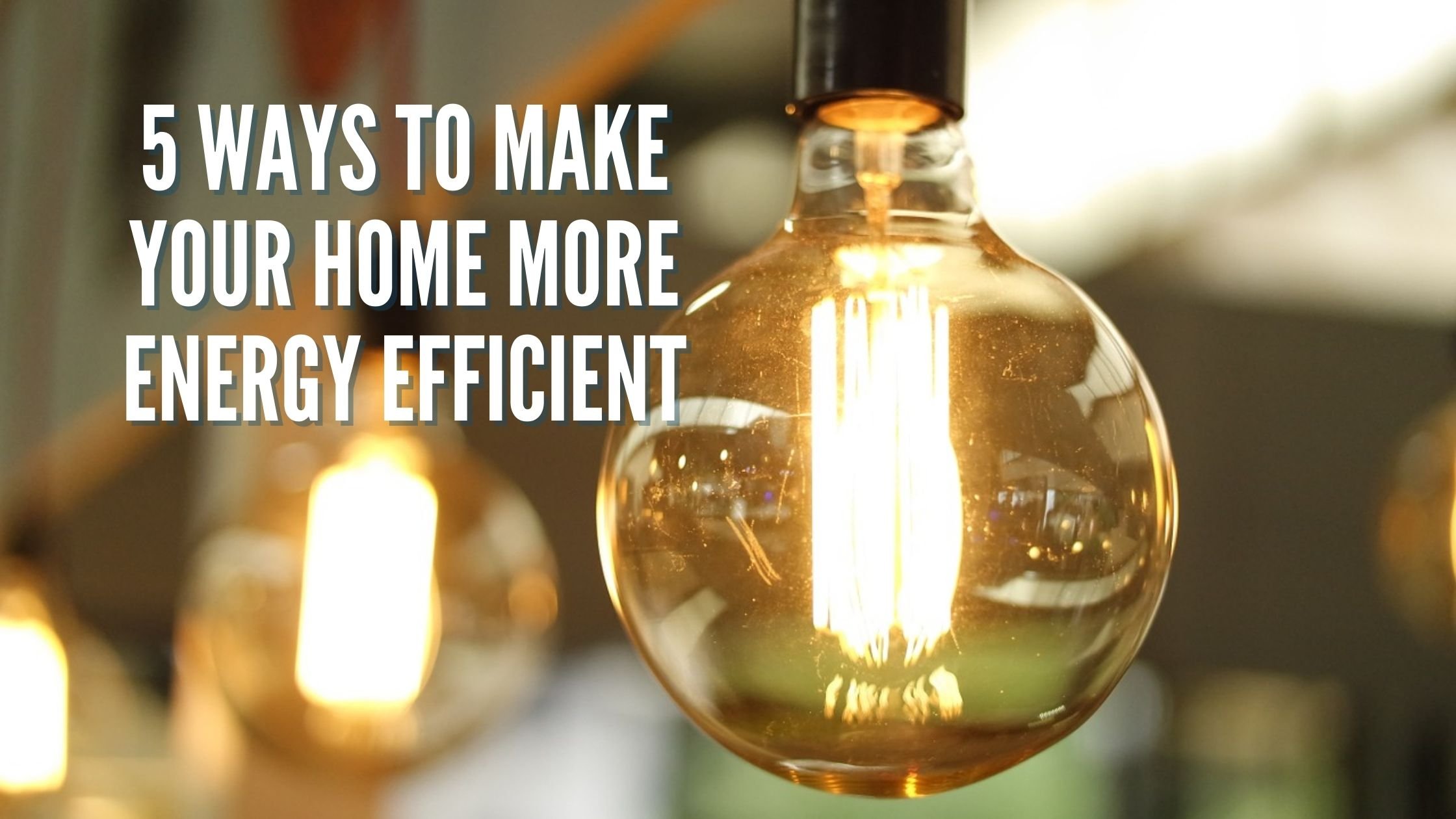Discover a comprehensive roadmap to transform your home into a haven of energy efficiency with our guide, [• 50 Ways to Make Your Home More Energy Efficient: A Comprehensive Guide to Sustainable Living]. This article unveils a treasure trove of practical strategies to reduce your energy consumption, save money, and live a greener life. From simple tweaks to cutting-edge home automation, we’ve got you covered with 50 innovative tips to make your home an energy-saving powerhouse.
Key Takeaways:
- Conduct an energy audit to find areas for improvement.
- Turn off lights and unplug appliances when not in use.
- Use energy-efficient light bulbs (LED or CFLs).
- Limit lighting use to essential areas.
- Set thermostats to optimal temperatures.
- Install programmable thermostats for efficient temperature control.
- Use power strips to manage devices and prevent standby power draw.
50 ways to make your home more energy efficient

Here are 50 simple ways to make your home more energy efficient and reduce your monthly energy bills.
- Conduct an energy audit. This will help you identify areas where your home is losing energy and wasting money.
- Switch off lights and unplug appliances when not in use. This may seem simple, but it can make a big difference in your energy consumption.
- Use energy-efficient light bulbs (LED or CFLs). These bulbs use less energy and last longer than traditional incandescent bulbs.
- Use just enough lighting, especially in unoccupied rooms. Don’t leave lights on in rooms that you’re not using.
- Set thermostats to minimal temperatures for heating and cooling. You can save energy by setting your thermostat a few degrees cooler in the winter and a few degrees warmer in the summer.
- Install programmable thermostats to optimize temperature control. These thermostats can automatically adjust the temperature in your home based on your schedule.
- Use a power strip to manage multiple devices and prevent standby power consumption. Standby power is the energy that is used by devices when they are turned off but still plugged in.
- Seal air leaks around windows and doors. This will help to keep warm air in during the winter and cool air in during the summer.
- Insulate your attic and walls. This will help to keep your home warm in the winter and cool in the summer.
- Install energy-efficient windows and doors. These windows and doors will help to keep your home at a comfortable temperature all year long.
- Use a ceiling fan to circulate air. This will help to keep your home cool in the summer and can also help to distribute heat in the winter.
- Take shorter showers. Showers account for a significant portion of household water and energy use.
- Wash clothes in cold water and air-dry them. This will save energy and reduce wear and tear on your clothes.
- Use a clothesline to air-dry your clothes. This is a great way to save energy and get your clothes fresh and fluffy.
- Hang your clothes to dry instead of using a dryer. This is a good way to save energy and reduce wear and tear on your clothes.
- Use energy-efficient appliances. Look for appliances with the Energy Star label.
- Cook with a slow cooker or microwave. These appliances use less energy than a conventional oven.
- Use a toaster oven instead of a conventional oven. Toaster ovens use less energy and are great for small meals.
- Use a grill or barbecue instead of cooking indoors. This will help to save energy and reduce indoor air pollution.
- Compost your food scraps. Composting helps to reduce waste and can also be used to fertilize your garden.
- Plant trees around your home. Trees can help to shade your home in the summer and reduce wind in the winter.
- Install solar panels. Solar panels can generate electricity from sunlight, which can help to reduce your energy bills.
- Install a wind turbine. Wind turbines can generate electricity from wind, which can also help to reduce your energy bills.
- Use a geothermal heat pump. Geothermal heat pumps use the earth’s natural heat to heat and cool your home, which can save you money on your energy bills.
- Get a home energy assessment. This will help you identify areas where you can make energy-efficient upgrades to your home.
- Make small changes to your daily routine. Things like turning off lights when you leave a room and unplugging appliances when you’re not using them can make a big difference in your energy consumption.
- Educate yourself about energy efficiency. The more you know about energy efficiency, the more likely you are to make changes that will save you money and reduce your environmental impact.
- Consider a renewable energy source. Solar and wind power are both great options for renewable energy.
- Be mindful of your energy usage. The more aware you are of how you’re using energy, the more likely you are to make changes that will save you money and reduce your environmental impact.
- Set an energy budget. This will help you track your energy usage and make sure that you’re not spending more than you can afford.
- Make energy efficiency a priority. The more important energy efficiency is to you, the more likely you are to make changes that will save you money and reduce your environmental impact.
- Get involved in your community. There are many ways to get involved in your community and promote energy efficiency.
- Join an energy cooperative. This is a great way to learn about energy efficiency and get involved in your community.
- Volunteer your time to help others save energy. There are many organizations that can use your help to promote energy efficiency.
- Become a certified energy auditor. This is a great way to learn about energy efficiency and help others save money on their energy bills.
- Write about energy efficiency. This is a great way to share your knowledge about energy efficiency with others.
- Talk to your friends and family about energy efficiency. The more people who know about energy efficiency, the more likely they are to make changes that will save them money and reduce their environmental impact.
- Make energy efficiency a part of your life. The more energy efficient you are, the more money you’ll save and the less impact you’ll have on the environment.
- Be an advocate for energy efficiency. The more people who are aware of energy efficiency, the more likely we are to make changes that will save us money and protect our planet.
- Make a difference. You can make a difference in the fight against climate change by making changes to your own life and by educating others about energy efficiency.
- Start today. The sooner you start making changes to improve your energy efficiency, the sooner you’ll start saving money and reducing your environmental impact.
**By following these tips, you can make your home more energy-efficient, save money on your energy bills, and reduce your environmental impact.
Discover the latest opportunities for remote work with a collection of 12 pass work from home jobs. Maintain a healthy lifestyle with our guide to 7 exercises to do everyday at home. If you need assistance with your insurance claims, you can reach the aaa home claims phone number for prompt support.
Upgrade Windows and Doors

If you’re looking to make your home more energy-efficient, replacing your windows and doors is a great place to start. Drafty windows and doors can account for up to 25% of heat loss in a home, so upgrading to energy-efficient models can make a significant difference in your energy bills and comfort level.
Here’s a step-by-step guide to upgrading your windows and doors:
- Assess your current windows and doors. Take a close look at your windows and doors and identify any areas where they might be letting in drafts. Check for cracks, gaps, and loose weatherstripping.
- Choose energy-efficient models. When choosing new windows and doors, look for models that are ENERGY STAR certified. ENERGY STAR windows and doors meet specific energy efficiency standards and can help you save money on your energy bills.
- Install the new windows and doors. Installing new windows and doors can be a DIY project, but it’s best to hire a professional if you’re not comfortable doing it yourself. A professional installer will ensure that the windows and doors are installed correctly and sealed properly.
Key Takeaways:
- Drafty windows and doors can account for up to 25% of heat loss in a home.
- Upgrading to energy-efficient windows and doors can make a significant difference in your energy bills and comfort level.
- Look for ENERGY STAR certified windows and doors when choosing new models.
- Hiring a professional installer is recommended to ensure that the windows and doors are installed correctly and sealed properly.
Relevant URL Sources:
- Department of Energy: Update or Replace Windows
- Furnace Prices: How to Make Your Home More Energy Efficient
Insulate and seal air leaks
When you think about making your home more energy-efficient, you probably think about upgrading your appliances or installing solar panels. But did you know that one of the most effective ways to save energy is to insulate and seal air leaks?
Air sealing is the process of sealing up cracks and gaps in your home’s envelope to prevent air from leaking in or out. This can be done using a variety of methods, including caulking, weatherstripping, and spray foam. Insulation is the process of adding material to your home’s attic, walls, and floors to help trap heat in the winter and keep it out in the summer.
Why is insulating and sealing air leaks important?
- It reduces your energy bills. By preventing air from leaking in or out, you can reduce the amount of energy needed to heat or cool your home — which can save you money on your energy bills.
- It improves your comfort. A well-sealed and insulated home is more comfortable to live in, as it’s less drafty and the temperature is more consistent throughout the house.
- It can improve your health. Air leaks can allow moisture and pollutants to enter your home, which can trigger allergy and asthma symptoms. A well-sealed and insulated home can help to reduce these problems.
How can you insulate and seal air leaks?
There are a number of ways to insulate and seal air leaks in your home. Some of the most common methods include:
- Caulking and weatherstripping: Caulking and weatherstripping are two of the most common ways to seal air leaks around windows and doors. Caulk is a sealant that is applied to the gaps between the window or door frame and the wall. Weatherstripping is a material that is applied to the edges of windows and doors to create a seal.
- Spray foam: Spray foam is a type of insulation that is applied to the gaps between the studs in your walls and the gaps around your windows and doors. Spray foam expands to fill the gaps and create a seal.
- Batt insulation: Batt insulation is a type of insulation that is made of fiberglass or cellulose. Batt insulation is installed between the studs in your walls and the joists in your attic.
What are the benefits of insulating and sealing air leaks?
There are a number of benefits to insulating and sealing air leaks in your home, including:
- Reduced energy bills: Insulating and sealing air leaks can help you save money on your energy bills by reducing the amount of energy needed to heat or cool your home.
- Improved comfort: A well-sealed and insulated home is more comfortable to live in, as it’s less drafty and the temperature is more consistent throughout the house.
- Improved health: Air leaks can allow moisture and pollutants to enter your home, which can trigger allergy and asthma symptoms. A well-sealed and insulated home can help to reduce these problems.
Key Takeaways:
- Insulating and sealing air leaks can significantly reduce energy consumption and costs.
- It enhances comfort by eliminating drafts and maintaining a consistent temperature.
- Air sealing improves indoor air quality by reducing moisture and pollutant infiltration.
- Implementing air sealing measures in conjunction with insulation maximizes energy efficiency.
- Energy savings and improved comfort are substantial benefits of insulating and sealing air leaks.
Citations:
- Consumer Guide to Air Sealing the Home – Department of Energy
- Why Seal and Insulate? | ENERGY STAR
Install Energy-Efficient Appliances
Key Takeaways:
- Energy Star Certification: This certification indicates that the appliance meets strict energy efficiency standards set by the U.S. Environmental Protection Agency (EPA).
- Higher Upfront Cost but Lower Long-Term Savings: Energy-efficient appliances may cost more initially, but they save on energy bills over their lifespan.
- Check Energy Usage Labels: The yellow EnergyGuide label provides information on the appliance’s estimated annual energy consumption and operating costs.
- Match Size to Needs: Avoid oversizing appliances, as this can lead to energy waste. Determine the appropriate size based on your household’s needs.
- Optimal Placement: Ensure proper ventilation and avoid placing appliances near heat sources to prevent overheating and reduce energy consumption.
Steps to Install Energy-Efficient Appliances:
- Research and Comparison: Explore different brands, models, and features to find appliances that meet your energy efficiency needs and budget.
- Check for Rebates and Incentives: Many utility companies and government programs offer rebates and incentives for purchasing energy-efficient appliances.
- Qualified Installer: Hiring a qualified installer ensures proper installation, maximizing energy savings and appliance lifespan.
- Maintenance and Cleaning: Regular cleaning and maintenance, such as cleaning filters and coils, optimizes appliance performance and energy efficiency.
Pros and Cons of Installing Energy-Efficient Appliances:
Pros:
- Reduced energy consumption and utility bills
- Positive environmental impact by lowering greenhouse gas emissions
- Enhanced comfort and convenience with advanced features
- Increased resale value of your home
Cons:
- Higher upfront purchase cost
- May require specific maintenance or servicing
- Features and functionality may differ from non-energy-efficient models
Relevant URL Sources:
FAQ
Q1: What are the most effective energy-saving methods for homes?
A1: Conducting an energy audit, switching off lights and unplugging appliances when not in use, using energy-efficient light bulbs, optimizing thermostat settings, and installing programmable thermostats are highly effective energy-saving practices for residential properties.
Q2: How can I improve the insulation of my home to reduce energy loss?
A2: Upgrading insulation in walls, ceilings, and floors is crucial for reducing heat loss. Installing storm windows and doors, caulking and weatherstripping windows and doors, and replacing old windows with energy-efficient models further enhance insulation and energy savings.
Q3: What is air sealing and how does it contribute to energy efficiency?
A3: Air sealing involves sealing gaps and air leaks around windows, doors, and other openings in a home. It prevents excessive airflow, reduces drafts, and improves the effectiveness of insulation. This leads to reduced heating and cooling costs and enhanced comfort.
Q4: How can I make my appliances more energy-efficient?
A4: Cleaning and maintaining appliances regularly ensures optimal performance and energy efficiency. Additionally, choosing energy-efficient appliances when replacing old ones can significantly reduce energy consumption.
Q5: What are the benefits of conducting an energy audit for my home?
A5: An energy audit provides a comprehensive assessment of your home’s energy efficiency, identifying areas of energy loss and potential savings. It helps prioritize energy-saving measures, leading to reduced energy bills and a more sustainable home.
- Kitchen Backsplash For White Kitchen: Ideas To Inspire Your Renovation - November 21, 2025
- White On White Kitchen Backsplash: Is It Timeless? - November 20, 2025
- Backsplash Colors for White Cabinets: Find Your Perfect Match - November 19, 2025










